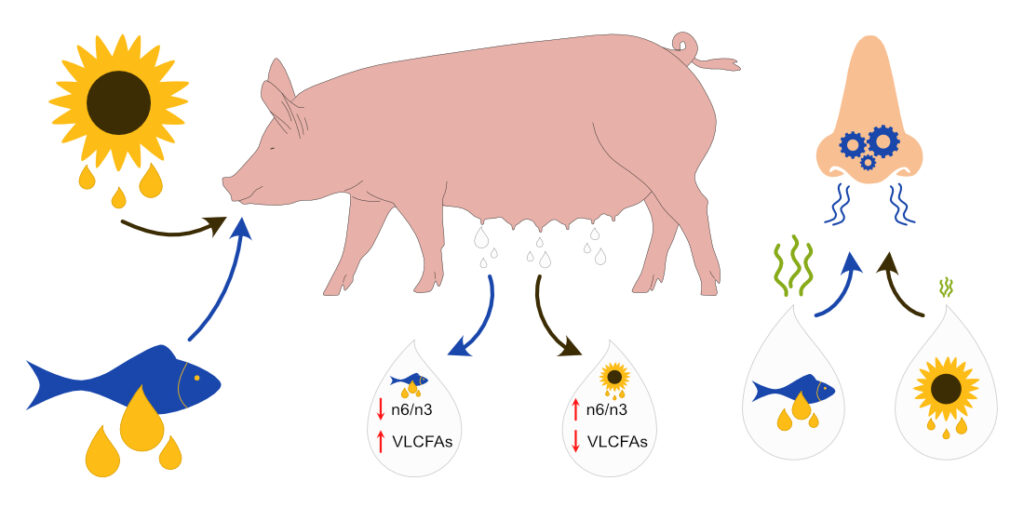In the development of supplementary feeds, more and more emphasis is being placed on n-3 polyunsaturated fatty acids and their sources. However, an important question is how these fatty acids are incorporated into the animal’s body or the resulting animal products at a given dose. An article presenting the results of the research carried out in this field by the staff of ADEXGO Kft., Széchenyi University and MATE was published in the peer-reviewed Journal of Applied Animal Research.
Effect of n-3 Polyunsaturated Fatty Acid Feeding on the Fatty Acid Profile and Odour of Milk in DanBred Sows
Robert Roszkos, George Bazar, Tamás Tóth, Zoltan Kovacs, Hedvig Febel, Miklós Mezes
The effects of n-6 and n-3 fatty acid supplementation on the fatty acid profile of sow milk were investigated using traditional fatty acid analysis and a novel method of the electronic nose (EN). The control group received 6.3 g of sunflower oil (SO) rich in n-6 fatty acids per kg feed, and experimental animals received the same amount of fish oil (FO) as an n-3 fatty acid source. The diets were corn- and soybean meal-based diets. Supplementation of SO enhanced the amount of linoleic acid (C18:2, n-6) (SO: 8.43 mg/mL vs. FO: 6.63 mg/mL milk), and significantly increased (p < 0.02) the amount of total polyunsaturated fatty acids (SO: 9.92 mg/mL vs. FO: 8.61 mg/mL milk) in the sow’s milk. On the contrary, FO significantly increased the amount of n-3 polyunsaturated fatty acids (FO: 1.17 mg/mL vs. SO: 0.69 mg/mL milk), especially eicosapentaenoic acid (C20:5, n-3), docosapentaenoic acid (C22:5, n-3), and docosahexaenoic acid (C22:6, n-3), in the milk (p < 0.001). FO and SO supplementation did not affect the analytical composition of milk. Milk samples collected from the differently fed individuals could be clearly separated according to the feeding groups based on the odor profile described by the EN.

Access the full paper free of charge on the website of the journal:
